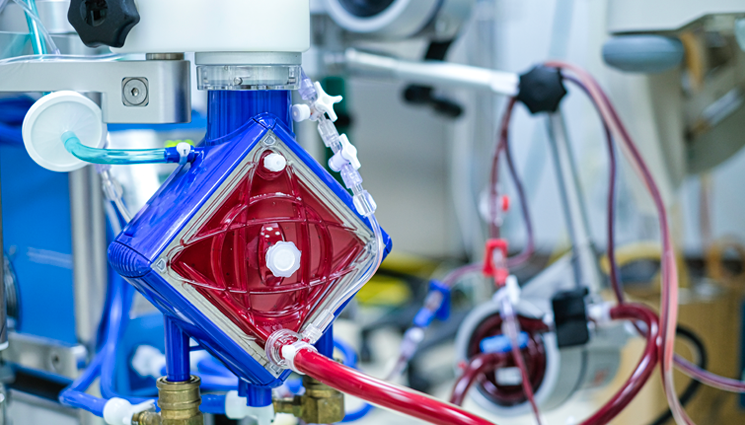
ECMO Programme
Extracorporeal membrane oxygenation (ECMO) is a life-support treatment that helps a person’s heart and lungs do their jobs when they are not working well on their own. ECMO does this by taking blood out of the body, oxygenating it outside the body, and then pumping it back into the body.
ECMO is used in a variety of situations, including:
- Heart failure: ECMO can be used to help people with severe heart failure who are not responding to other treatments.
- Lung failure: ECMO can be used to help people with severe lung failure, such as those with acute respiratory distress syndrome (ARDS).
- Cardiopulmonary arrest: ECMO can be used to help people who have had a cardiac arrest and are not breathing on their own.
- Pregnancy: ECMO can be used to help pregnant women with severe heart or lung problems.
ECMO is a complex procedure that requires a team of specialized doctors and nurses. It is not without risks, but it can be a lifesaving treatment for people with severe heart or lung problems.
How does ECMO work?
ECMO works by using a machine called an extracorporeal membrane oxygenator (ECMO). The ECMO machine has two major parts:
- A pump: The pump takes blood out of the body through a large vein in the neck or groin.
- An oxygenator: The oxygenator oxygenates the blood outside the body.
The blood then goes back into the body through a large vein in the neck or groin.
ECMO can be used for a short period of time, such as a few days, or for a longer period of time, such as weeks or months. The length of time that ECMO is used depends on the patient’s condition.
Risks of ECMO
ECMO is a serious procedure with some risks, including:
- Blood clots: ECMO can increase the risk of blood clots, which can lead to stroke or other problems.
- Infection: ECMO can increase the risk of infection.
- Bleeding: ECMO can increase the risk of bleeding.
- Other complications: Other complications of ECMO can include kidney problems, liver problems, and neurological problems.
Recovery from ECMO
The recovery period after ECMO varies depending on the patient’s condition. Some people may need to stay in the hospital for several weeks or months after ECMO. Others may be able to go home sooner.
The recovery period after ECMO can be challenging. Patients may need to learn how to do things that they took for granted, such as walking and eating. They may also need to see a variety of doctors and therapists to manage their condition.
Conclusion
ECMO is a life-saving treatment that can help people with severe heart or lung problems. However, it is a complex procedure with some risks. Patients who need ECMO should talk to their doctor about the risks and benefits of the procedure.
